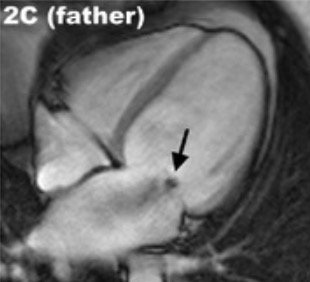Playlist
Show Playlist
Hide Playlist
Cardiomyopathy in Children
-
Slides Endocarditis Myocarditis and Pericarditis Cardiomyopathy.pdf
-
Reference List Pediatric Nursing.pdf
-
Download Lecture Overview
00:01 Cardiomyopathy. 00:03 Now we think of cardiomyopathy as myocarditis could be one type of cardiomyopathy, but in pediatrics we have a lot of other causes of problems with the heart that are unique to children. 00:15 So, in children, and it's not so important that you remember all the genetic causes individually, but remember there are a lot of genetic causes of cardiomyopathy in children. 00:29 Examples are: metabolic storage diseases such as Pompe's Disease, conduction defects, mitochondrial disorders, ion channel disorders, muscular dystrophies -- all of these genetic problems can cause a cardiomyopathy. 00:46 And they'll be different depending on the cause. 00:50 Pompe's disease for example can present very early in childhood and have a cataclysmic march towards death in the first year of life. 01:00 Whereas muscular dystrophies, the cardiac disease doesn't present till much later though it definitely causes problems and may only present in the adolescent years. 01:10 There are also acquired causes that are unique to children for cardiomyopathy. 01:16 Examples are, as we discussed previously acquired myocarditis. 01:20 There are also some very unusual ones. 01:23 One example is Takotsubo myocarditis. 01:27 In infants especially with tachycardia, we may see cardiomyopathy. 01:33 Unlike adults with tachycardia, for example in the case of SVT, infants can be asymptomatic with heart rates in the 220-240 range for a long period of time and may eventually develop a cardiomyopathy if the parent or the doctor doesn't notice the tachycardia. 01:52 Likewise, a common problem in infants is infants of the diabetic mother. 01:57 These infants have macrosomia and they may have too generous of a myocardium resulting in a cardiomyopathy at birth. 02:07 So, how do these patients present with cardiomyopathy? It really is different depending on the age. 02:13 But one consistent finding is decreased energy and exercise intolerance that heart just can't keep up. 02:20 Remember in infants, a workout is just eating. 02:24 The biggest workout for a newborn baby is getting their mouth around that nipple and having a meal. 02:31 And so babies with bad cardiomyopathy may present with sweating with feeds or just not being able to tolerate feeds, only getting the first half in and then becoming exhausted. 02:42 If they're older when they get it, it may be they can't finish their soccer game. 02:47 It really depends on the age. 02:49 Patients will eventually often develop congestive heart failure. 02:54 Remember congestive heart failure, they can have JVD, they can have a large liver, they can become again having decreased energy and exercise intolerance but part of that now may be from pulmonary congestion. 03:07 In severe cases they may present with unstable V-tach or V-fib. 03:12 These patients can go suddenly into a very severe rhythm and require a resuscitation. 03:17 Or in the worst case scenario, patients may just suddenly die from a cardiomyopathy. 03:23 How do we test for it? Typically these patients are in respiratory distress. We'll get a chest x-ray and we'll see pulmonary vascular congestion as well as a large heart. 03:35 EKG findings can be variable. 03:38 You can generally see alterations in the QRS complexes. 03:43 You can have a migration of the direction of that QRS. 03:47 We may get an echo where we can see the myocardium not working correctly. 03:53 If we want to make the diagnosis and truly understand what's going on, remember in children some of these causes are metabolic or genetic. 04:02 We will often end up with getting a myocardial biopsy Usually through femoral catheterization up into the heart, get a little piece of that, send that to the lab, and the microscopy can help us with that diagnosis. 04:16 Also, genetic testing is often indicated. 04:18 And now there are genetic panels we can send which can help us understand which gene might be responsible for what's going on. 04:24 That can help not only therapy with the patient but also future counseling for the parents.
About the Lecture
The lecture Cardiomyopathy in Children by Brian Alverson, MD is from the course Pediatric Cardiology.
Included Quiz Questions
Which of the following tests is least likely to assist the clinician in the evaluation of a child suspected of cardiomyopathy?
- Blood cultures
- Chest X-ray
- Genetic testing
- Cardiac echo
- Myocardial biopsy
Which of the following is an acquired cause of cardiomyopathy?
- Takotsubo cardiomyopathy
- Pompe cardiomyopathy
- Muscular dystrophy cardiomyopathy
- Metabolic storage disease cardiomyopathy
- Ion channel disorders cardiomyopathy
Customer reviews
4,0 of 5 stars
| 5 Stars |
|
1 |
| 4 Stars |
|
0 |
| 3 Stars |
|
1 |
| 2 Stars |
|
0 |
| 1 Star |
|
0 |
Last few seconds of video doesn't help because there's already an update.
Excellent lecture, I think it's a group of disease which is not often spoken about.





